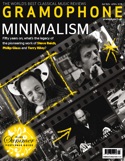Texte paru dans: / Appeared in: |
|
 Recording of the month |
Outil de traduction (Très approximatif) |
|
Reviewer:
Lindsay Kemp We hear so many Vivaldi operas these days that we may be at risk of forgetting where we came in with him. There’s not much danger of The Four Seasons receding from our consciousness, of course, but what of L’estro armonico, the set of 12 concertos for four, two and single violins whose publication in 1711 first announced its composer as a major international presence? It may be my imagination, but the flow of recordings seems to have slowed in recent years. If so, that is a pity, as this is music which, when played right, can course through a room like early-morning sun. Its famously untranslatable title could hardly be more apt. For here, unmistakably, is where the spark of Vivaldi’s inflammable brilliance first ignited.
Perhaps the wait has been worth it, because these one-to-a-part performances by Rachel Podger and Brecon Baroque have the heat to make your blood run faster. I don’t mean heat of the harddriven, percussive kind so often encountered today; on the contrary, line is always respected, tempos are up with the pace but never over-pushed, and the instruments are allowed to speak with warmth and humanity. There is plenty of detail, but it is natural and never fussy, and ornamentation is always clever, sometimes humorous, often delightful. Add to that technical excellence – the exactness with which the four violins articulate their semiquaver groups in the first movement of Concerto No 1, or the cutting precision of the scurrying continuo in the finale of No 3 – and a recorded balance that hits the perfect combination of blend and clarity, and you already have the ingredients for something memorable. What really shoots this recording straight to the top of the pile, however, is the sheer joy of it, the spontaneity and the tireless, surging musical energy of its many sudden feints and sallies. How grippingly, for instance, the tension climbs in the often rather polite first movement of No 4; how liltingly the off-beat theorbo strums add springy definition to the finale of No 5; and how invigoratingly the taught energy of those semiquavers in the No 3 finale finds release in a glorious chain of suspensions, and the witty interplay of the final bars spills over into a final-note twiddle that is pure natural exuberance.
Such things are what we have come to expect from Podger of course, but in these pieces her musical personality finds a home so congenial that it simply bursts from the speakers. Not that it is all uniform bonhomie, however. No 6, the best-known solo concerto of the set, is subtly drawn, with a slow movement of concentrated stillness and lyrical beauty and a gently coaxed finale that one could even consider as deliberately distanced, while No 12, with its delicate dynamics, relaxed tempos and free-spirited attitude to rubato, likewise creates a winsome expressive world of its own.
There is no doubt that Podger has the ability to empower the minds and bodies of the 11 players around her too, not just fellow violinists Bojan Čičić, Johannes Pramsohler and Sabine Stoffer, but violas Jane Rogers and Ricardo Cuende Isuskiza, cellist Alison McGillivray, violone-player Jan Spencer, theorbists David Miller and Daniele Caminiti and keyboard-player Marcin Świątkiewicz as well. Some of these are pupils of hers, others not, but the result is performances with a wonderful sense of mutual fun and team-play.
Tafelmusik, fielding a slightly larger orchestra, achieved similar elan in their 2007 Analekta recording of eight Op 3 concertos, but the one Brecon Baroque reminded me of most was the 1980 complete set by the Academy of Ancient Music on L’Oiseau-Lyre under Christopher Hogwood, another revelatory one-to-a-part version with a similarly happy co-operative spirit (12/81). That featured four top British Baroque violinists of the time in Monica Huggett, John Holloway, Catherine Mackintosh and Elizabeth Willcock, but though it stills stand up well today, it is easily surpassed by the rich and free-flowing musicianship of this exhilarating release. Perhaps that can be ascribed to 35 years of evolution in Baroque string-playing, but another factor is that there is probably no more inspirational musician working today than Podger, in whose company surely no violinist’s bow could sleep in the hand. She certainly had me reaching for my air-violin. |
|
|
|
|
|
Cliquez l'un ou l'autre
bouton pour découvrir bien d'autres critiques de CD |
|

/0723385365150.jpg)


